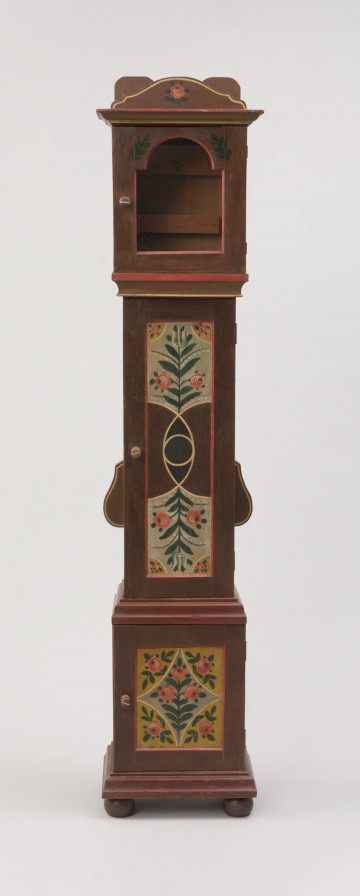
Mug
2. połowa XIX wieku
National Museum in Szczecin
Part of the collection: Pyrzycka folk culture
A distaff consists of a stick and a round spinning wheel on which the spun flax, hemp or woollen threads, i.e., tares, were wound. Next came the spinning, which consisted of pulling the thread from the spinning wheel with the left hand (while wetting it with saliva or water) and winding it onto a spindle spun with the right hand. The distaff was placed in a long, narrow spindle which was the base of the tool. The spinning wheel and the spindle are among the oldest personal possessions of women. They always did this tedious and labour-intensive work. It was believed that a poor spinner was not a good candidate for a wife. This simple tool, turned into a beautiful, painted and decorated object, was a bride or wedding gift in Pomerania, among other places. In this case, the distaff was an unusable object; instead, it was a valuable symbolic gift, magically influencing the new family, its prosperity, love and fertility. The distaff has all the magical elements for good luck painted on it: hearts (love), heads of snakes/dragons (prosperity), bird figures (protective and guarding power) and flowers (joy). Its shape is reminiscent of the ‘tree of life’, which was a symbol of the unchanging world order in folk culture.
Iwona Karwowska
Author / creator
Dimensions
cały obiekt: height: 84 cm, width: 10,5 cm
Creation time / dating
Creation / finding place
Identification number
Location / status

2. połowa XIX wieku
National Museum in Szczecin

2. połowa XVII wieku
National Museum in Szczecin

2. połowa XIX wieku
National Museum in Szczecin
DISCOVER this TOPIC
National Museum in Lublin
DISCOVER this PATH
Educational path